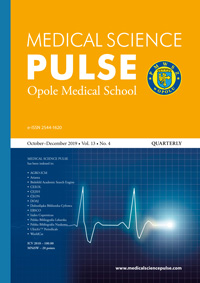Occurrence of Legionella spp. in Polish hotels between 2009-2013 and 2014-2016: a comparative study
Occurrence of Legionella spp. in Polish hotels between 2009-2013 and 2014-2016: a comparative study
Author(s): Iwona Gładysz, Małgorzata Wójtowicz-Bobin, Agnieszka Sikora, Zofia M. Karczewska, Jan KarczewskiSubject(s): Health and medicine and law
Published by: Państwowa Medyczna Wyższa Szkoła Zawodowa w Opolu
Keywords: Legionnaires’ disease; Legionella pneumophila; water
Summary/Abstract: Background: Legionella spp. have been found in both natural and manmade water systems, coastal waters, thermal waters, moist soils, clays, and near wastewater discharge sites. Aim of the study: This study aims to report a comparative, retrospective epidemiological analysis of water testing study results indicating the presence of Legionella spp. in Poland between 2009-2013 and 2014-2016. This study is a comparative retrospective epidemiological analysis of individual tests for the presence of Legionella spp. in hotels between two different time periods. The two time periods being compared in this study are between 2009-2013 (n=369 hotels) and 2014-2016 (n=174 hotels). Reporting has been performed in accordance with the STROBE checklist. Material and methods: Hot water samples were collected by employees of the Sanitary and Epidemiological Station in Poland as part of routine water quality monitoring. Samples were taken from the water supply systems of 369 hotels, representing 19.59% of total hotels in Poland, from January 2009 until December 2013. Samples were taken from the water supply systems of 174 hotels, representing 7.51% of total hotels in Poland, from January 2014 until December 2016. Results: The percentage of facilities classified as Group I remained comparable for the period between 2009 and 2013 compared to the period between 2014 and 2016. The percentage of facilities classified as Group II, however, showed a clear upward trend between 2014 and 2016 compared to the time period between 2009 and 2013. The percentage of facilities classified as Group III showed a clear downward trend between 2014 and 2016 compared to the time period between 2009 and 2013. Conclusions: The colonization rates observed in this comparative study indicate that the aquatic environment in these facilities requires constant monitoring to lower the risk of legionellosis. The increased colonization of hotel water networks with Legionella spp. is a serious health problem that requires constant monitoring.
Journal: Medical Science Pulse
- Issue Year: 13/2019
- Issue No: 4
- Page Range: 27-31
- Page Count: 5
- Language: English

